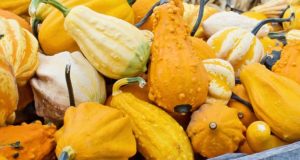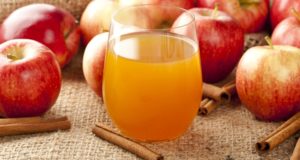Food preservation skills are an important part of homesteading. It’s wonderful to pop open a jar of home-canned tomatoes or enjoy your own frozen peaches when the garden and orchards are buried under two feet of snow. But let’s face it—there are only so many hours in a day, and food preservation is time-consuming!
Wouldn’t it be easier if you could grow foods that store themselves? You can. There are plenty of foods you can grow that store well without going to the trouble of canning or freezing or dehydrating. You might be growing many of them already! But just in case, here are a couple of handy lists to use when choosing crops that can help reduce the workload at harvest time.
The All-Natural Fertilizer That Can Double Your Garden Yield!
Here are some foods that store themselves right in the garden. Depending upon climate and specific cultivars, these vegetables can either overwinter or last partway into winter.
Kale.
I leave mine in the garden until it is literally buried under snow. As winter encroaches, it becomes less appealing to eat fresh, but is still great for smoothies, soups, and calzones.
Collard greens.
These are hardy in cold weather, but do not last as well as kale in my garden.
Brussels sprouts.
The texture changes as the temperature drops, but they are still good to eat.
Cabbage.
Like its cruciferous cousins—kale and Brussels sprouts—it loses texture appeal as it freezes, but is still edible cooked.
Parsnips.
Around my homestead, April is peak parsnip season. I routinely leave them in the ground all winter and dig them as soon as the ground thaws, with excellent results.
Carrots.
Many people leave carrots in the ground all winter. My own success with this method has been marginal, because underground animals—mice and voles, I presume—love to eat them. But for those whose local pests do not love carrots, this is a great option.
Food Storage Secrets for homesteaders.
Other foods do well in cold storage, harvested and put into a climate-controlled cellar where, ideally, they are kept at just above freezing. As with the list of foods that store well without harvesting, individual success with cold storage techniques can vary depending upon cultivars and the conditions—temperature and humidity—of the storage area. Here’s the cold storage list:
Potatoes.
One of the many advantages to potatoes is that they store well for many months in the right conditions.
Sweet potatoes.
When well-cured, sweet potatoes last a long time as well.
Winter squash.
This is a category in which types and cultivars vary widely in their ability to last in cold storage. I grow an assortment of winter squash, and try to eat up the poorer keepers first.
Pumpkins.
As with squash, depending up cultivar, pumpkin longevity in storage can vary.
Leeks.
I’ve had great success with leeks lasting well into February, tossed root-down in a plastic storage tote in the coldest part of the cellar.
Onions.
The secret to long-term onion storage is to keep them from touching each other. The best way I’ve found to do that is to hang them in old nylon stockings, with a knot tied between each onion.
Carrots.
Root-down in a bucket of clean sand, and they’ll last well.
Parsnips.
Store them the same way as carrots.
Brussels sprouts.
These are easy to store, right on the stalks. Harvest, trim, and keep cold.
Cabbage.
It’s a good idea to choose a cultivar developed for long storage, and then just pull them up by the roots and hang them upside down from the root cellar rafters.
Daikon radishes.
Any large winter radishes do well in cold storage, much the same as carrots.
Beets.
I’ve had good luck storing them in clean sand.
Celeriac.
This is another good candidate for cold storage, either just in an open-air basket or in sand.
Garlic.
I’ve had good luck keeping garlic for many months, often lasting until scapes begin to form on a fresh crop. The secrets seem to be proper field curing and keeping it in the dark.
Shallots.
Like their allium cousins—onions, leeks, and garlic—these store well in open air.
Turnips and rutabagas.
These, like most other root vegetables, do well in cold storage, and are not fussy about conditions.
Kohlrabi.
Like many brassicas, kohlrabi stores nicely in baskets, totes, or on the shelf.
Popcorn.
I have had success drying popcorn on the cob and storing it in a paper bag in the kitchen cabinet—pretty easy!
Apples.
Some apples can last in cold storage all the way to March, April, and even beyond. Apples do well in cold humid conditions.
Pears.
Many pears last well into winter when kept cold.
Certain herbs.
I use cold-hardy herbs like sage and rosemary straight from the garden until they are buried under snow.
Dry beans.
When it comes to return on investment, it doesn’t get much better than dry beans. Cheap, hardy, easy, and extremely long-lasting in storage. Beans are happy in cool dry conditions, in screw-top containers.
Many grains.
While grains do not exactly store themselves almost straight from the garden like much of the food on this list does—grains do need a bit of processing between the field and storage—they still store without needing to be canned or frozen.
Most nuts.
With the outer husks removed, nuts are a great choice for preservation-free food.
Food storage is an irreplaceable component in the overall diets of most homesteaders. But it never hurts to grow some foods that preserve themselves with little or no effort.
What would you add to our list? Share your thoughts in the section below:
 Off The Grid News Better Ideas For Off The Grid Living
Off The Grid News Better Ideas For Off The Grid Living




